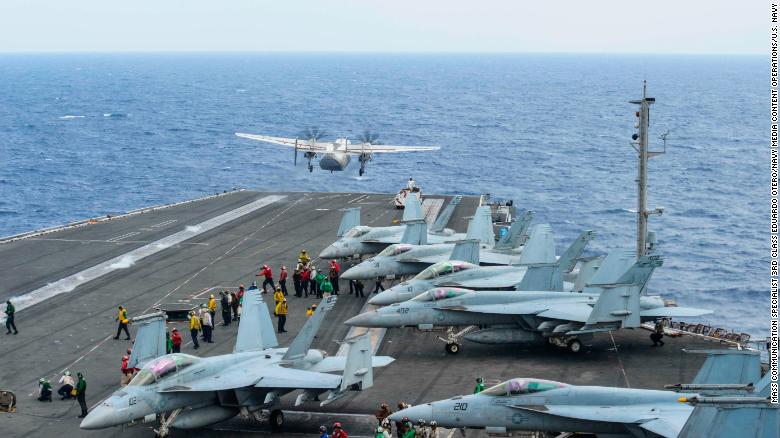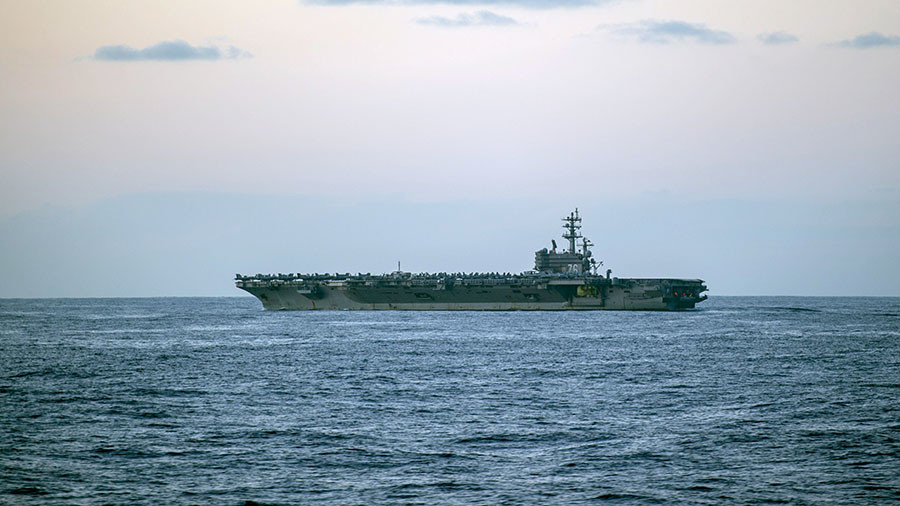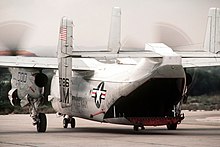http://edition.cnn.com/2017/11/22/politics/navy-aircraft-crash/index.html
Navy aircraft crash leaves 3 missing in Philippine Sea
By Madison Park and Junko Ogura, CNN
Updated 1152 GMT (1952 HKT) November 22, 2017

Initial investigation blames Navy for crash
Story highlights
The Navy transport plane was carrying 11 crew and passengers when it went down around 2:45 p.m. Japan Standard Time.
Eight people have been rescued and are in good condition aboard the aircraft carrier USS Ronald Reagan, the Navy said in a statement. Meanwhile US and Japanese ships and planes are searching the area for the three people who remain missing.
The names of those who were onboard are being withheld pending the notification of their next of kin, the Navy said.
The crash happened approximately 500 nautical miles southeast of Okinawa as the C2-A Greyhound aircraft was on course to land on the Reagan. It had been transporting passengers and cargo from the Marine Corps Air Station Iwakuni in Japan to the aircraft carrier.
A Navy public affairs officer told CNN the plane was on approach to the carrier, but didn't know how far away it was.
A C-2A Greyhound plane launches from the USS Ronald Reagan during a 2017 exercise.
The Reagan is operating in the Philippine Sea as part of an exercise with Japan's naval defense force.
The cause of the crash is not known at this time, according to an initial statement from the US Navy 7th Fleet. "I have been informed from the US military that engine trouble may have caused (the crash)," Japan's Defense Minister Itsunori Onodera told reporters Wednesday.
Troubled year for Navy in Pacific
It's been a difficult year for the Navy in the Pacific following a spate of incidents that led to the deaths of 17 sailors.
In August, the Vice Adm. Joseph Aucoin was relieved of his duty as the commander of the US 7th Fleet, following a deadly collision between the destroyer USS John S. McCain and a merchant ship off Singapore that left 10 US sailors dead. It was the fourth incident involving a US warship in the Pacific this year.
In June, the guided-missile destroyer USS Fitzgerald collided with a cargo ship off Japan, killing seven US sailors.
Those two fatal collisions were "avoidable" and "numerous failures occurred on the part of leadership," a Navy report concluded earlier this month.
In May, the guided-missile cruiser USS Lake Champlain was struck by a South Korean fishing boat off the Korean Peninsula. And in late January, the guided-missile cruiser USS Antietam ran aground in Tokyo Bay, damaging its propellers.
The Navy launched multiple investigations, a safety pause, and reviews in the wake of the accidents.
CNN's Ivan Watson, Emily Smith and Rebecca Wright contributed to this report.
Navy aircraft crash leaves 3 missing in Philippine Sea
By Madison Park and Junko Ogura, CNN
Updated 1152 GMT (1952 HKT) November 22, 2017

Initial investigation blames Navy for crash
Story highlights
- Three people are missing after Navy plane crashes
- A total of 11 people were onboard the C2-A Greyhound aircraft
The Navy transport plane was carrying 11 crew and passengers when it went down around 2:45 p.m. Japan Standard Time.
Eight people have been rescued and are in good condition aboard the aircraft carrier USS Ronald Reagan, the Navy said in a statement. Meanwhile US and Japanese ships and planes are searching the area for the three people who remain missing.
The names of those who were onboard are being withheld pending the notification of their next of kin, the Navy said.
The crash happened approximately 500 nautical miles southeast of Okinawa as the C2-A Greyhound aircraft was on course to land on the Reagan. It had been transporting passengers and cargo from the Marine Corps Air Station Iwakuni in Japan to the aircraft carrier.
A Navy public affairs officer told CNN the plane was on approach to the carrier, but didn't know how far away it was.
A C-2A Greyhound plane launches from the USS Ronald Reagan during a 2017 exercise.
The Reagan is operating in the Philippine Sea as part of an exercise with Japan's naval defense force.
The cause of the crash is not known at this time, according to an initial statement from the US Navy 7th Fleet. "I have been informed from the US military that engine trouble may have caused (the crash)," Japan's Defense Minister Itsunori Onodera told reporters Wednesday.
Troubled year for Navy in Pacific
It's been a difficult year for the Navy in the Pacific following a spate of incidents that led to the deaths of 17 sailors.
In August, the Vice Adm. Joseph Aucoin was relieved of his duty as the commander of the US 7th Fleet, following a deadly collision between the destroyer USS John S. McCain and a merchant ship off Singapore that left 10 US sailors dead. It was the fourth incident involving a US warship in the Pacific this year.
In June, the guided-missile destroyer USS Fitzgerald collided with a cargo ship off Japan, killing seven US sailors.
Those two fatal collisions were "avoidable" and "numerous failures occurred on the part of leadership," a Navy report concluded earlier this month.
In May, the guided-missile cruiser USS Lake Champlain was struck by a South Korean fishing boat off the Korean Peninsula. And in late January, the guided-missile cruiser USS Antietam ran aground in Tokyo Bay, damaging its propellers.
The Navy launched multiple investigations, a safety pause, and reviews in the wake of the accidents.
CNN's Ivan Watson, Emily Smith and Rebecca Wright contributed to this report.









